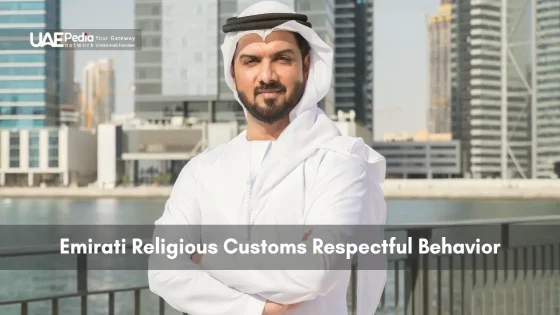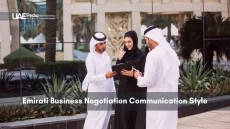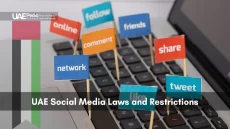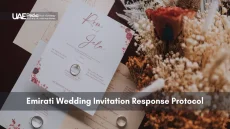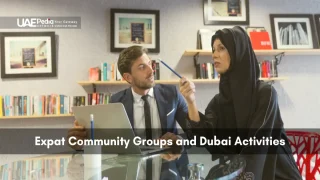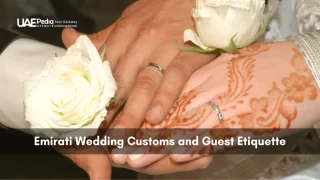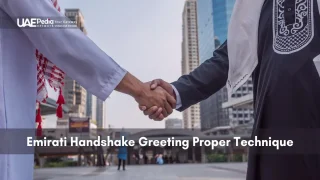Did you know over 200 nationalities coexist in Dubai’s bustling business hubs? This melting pot creates opportunities—and occasional missteps—for those unfamiliar with local norms. Understanding social cues here isn’t just polite; it’s a strategic advantage.
Programs focused on awareness and practical skills help bridge gaps between global professionals and Emirati traditions. These sessions go beyond textbook etiquette, blending real-world scenarios with insights into hospitality styles and decision-making rhythms unique to the region.
Why does this matter? Inclusive environments thrive when teams grasp subtle gestures—like accepting Arabic coffee with the right hand or respecting the majlis (gathering space) as a cornerstone of trust-building. Effective communication strategies tailored to the UAE turn potential misunderstandings into collaborative wins.
This guide unpacks how to:
- Adapt workplace habits without losing your authentic voice
- Read unspoken cues during meetings and social events
- Balance modern business practices with timeless traditions
Think of it as your backstage pass to thriving in a city where ambition meets heritage—no prior experience required.
Understanding Cultural Sensitivity in Dubai
Ever walked into a room and instantly felt the vibe shift? That’s cultural awareness in action—the ability to read unspoken rules shaping interactions. At its core, it’s about recognizing how traditions, beliefs, and social norms influence behavior. Think of it as your social GPS for avoiding accidental faux pas while building genuine connections.
Defining Cultural Sensitivity
Imagine planning a team lunch without considering dietary restrictions or prayer times. Oops. Sensitivity means anticipating these nuances through active listening and adaptability. Programs like cultural awareness workshops teach professionals to spot subtle cues—like when a delayed response signals respect rather than hesitation.
Dubai’s Unique Cultural Landscape
Here, skyscrapers meet desert traditions. Islamic values emphasize hospitality and modesty, while Bedouin roots prioritize community and oral agreements. The majlis, a gathering space for open dialogue, reflects this blend. Business decisions often weave patience into negotiations, valuing relationships over rushed deals.
The Importance of Cultural Awareness in Business
What if a single conversation could unlock a client’s trust—or accidentally derail months of work? In global hubs like the UAE, navigating unspoken expectations isn’t just nice-to-have—it’s business-critical. Companies using cross-cultural programs report 40% fewer misunderstandings with international partners and 25% faster decision-making cycles.
Impact on Customer Relations and Team Dynamics
Clear communication reshapes client interactions. Imagine a sales team adapting their pitch to align with a client’s preference for relationship-first discussions. One tech firm saw repeat contracts jump 35% after staff learned to read pauses as thoughtful deliberation rather than hesitation.
Teams thrive when members grasp diverse work styles. A logistics company reduced project delays by half once employees understood how hierarchy influences feedback. “Our collaboration shifted from friction to flow,” shared one manager. Training outcomes like these strengthen relationships while boosting morale.
Benefits ripple both ways:
- Employees gain tools to voice ideas without overstepping boundaries
- Employers retain talent by fostering inclusive environments
- Clients feel heard, paving the way for long-term partnerships
It’s not about memorizing rules—it’s about building bridges. When teams embrace awareness, every handshake (or elbow bump) becomes a step toward shared success.
dubai cultural sensitivity training highlights
Picture a workshop where laughter breaks the ice as colleagues practice greeting gestures. Modern programs blend storytelling with hands-on activities to decode social norms. These sessions focus on three pillars: communication upgrades, situational awareness, and real-world application.
Core Elements of Effective Programs
Role-playing scenarios let teams navigate tricky situations safely. For example, one exercise simulates a client meeting where participants learn to balance directness with diplomacy. Case studies dissect real-life misunderstandings—like why rushing decisions might cost trust.
| Module | Focus Area | Methods Used |
|---|---|---|
| Social Nuances | Non-verbal cues & hospitality customs | Guided group discussions |
| Decision Dynamics | Patience in negotiations | Timed scenario challenges |
| Conflict Navigation | Resolving accidental offenses | Partner role-swap exercises |
Structured content ensures skills stick. One manager shared, “We left with actionable phrases instead of vague theories.” Teams bond through collaborative puzzles that mirror workplace diversity. These activities reveal blind spots while celebrating different perspectives.
Development happens through doing, not lecturing. Participants craft personal action plans using feedback from peers. The result? Individuals gain confidence, while teams build shared strategies for inclusive collaboration.
Intercultural Communication Techniques in Dubai
Ever noticed how a well-timed smile can speak louder than a PowerPoint slide? Mastering exchanges here means blending words with unspoken cues. Let’s unpack tools that turn potential stumbles into smooth conversations.
Verbal and Non-Verbal Strategies
Keep language simple. Swap idioms like “hit the ground running” for clear phrases. One sales team avoided confusion by replacing sports metaphors with visuals during pitches. UAE etiquette guides suggest:
- Using pauses to show respect during discussions
- Matching your counterpart’s volume and formality
- Offering coffee before diving into agendas
Body language speaks volumes. Maintain relaxed eye contact—too intense feels confrontational. Open palms signal honesty, while crossed arms might shut doors. “I thought my client disagreed,” shared a project lead, “until I noticed their subtle head nods meant approval.”
Bridging Communication Gaps
Diverse teams thrive with intentional listening. Try repeating key points: “So your priority is timeline flexibility—correct?” Language apps like Duolingo help decode basic Arabic phrases, building goodwill.
When emails feel icy, pick up the phone. Tone gets lost in text—one manager resolved a 3-week email chain with a 10-minute call. For critical talks, invite a bilingual colleague to spot nuances. As one HR director noted: “Misunderstandings often vanish when we paraphrase instead of assume.”
Pro tip: Learn three local greetings. A simple “Sabah al-khair” (good morning) shows effort. Pair it with a light handshake (right hand only), and you’ve already built bridges before the meeting starts.
Case Studies and Real-World Examples
Imagine turning a tense boardroom moment into a breakthrough—using nothing but cultural insight. Let’s unpack real scenarios where awareness transformed workplace dynamics. These stories aren’t hypothetical—they’re proven results from teams who embraced practical learning.
When Gestures Spoke Louder Than Words
A logistics team once hit a snag when European managers misinterpreted Emirati colleagues’ silent pauses as disinterest. After role-playing exercises, they discovered these pauses signaled careful consideration. “We stopped rushing conversations,” shared a project lead. “Trust grew when we let silence work its magic.”
Another case study reveals how a mixed team navigated gift-giving customs. An American employee’s well-intentioned present (leather goods) accidentally crossed boundaries. Training clarified appropriate gestures—like dates or perfumes—and saved future partnerships.
“Our Dubai office conflict dropped 60% after we applied conflict resolution frameworks. Now, we ask instead of assume.”
Hands-on workshops yield measurable wins:
- Sales teams closing deals 40% faster by aligning negotiation styles
- Engineers reducing errors through clearer cross-border feedback loops
- Managers spotting unspoken concerns during majlis discussions
One participant summed it up: “Learning felt like unlocking a secret code—suddenly, every interaction made sense.” These aren’t isolated wins—they’re blueprints for anyone ready to listen beyond words.
Navigating Cultural Differences in the Workplace
What happens when a deadline-driven manager meets a consensus-seeking team? Workplace dynamics thrive—or stumble—on how we handle these differences. Diverse groups bring fresh ideas but face hurdles like conflicting communication styles or decision-making speeds. The key? Adaptability without losing authenticity.
Adapting Strategies for Diverse Teams
Start by mapping your team’s unique blend. A marketing team once bridged gaps by creating “culture cards” detailing each member’s preferences. One card read: “Feedback? Give it to me straight—but with a smile.” Simple adjustments create big impacts:
| Challenge | Strategy | Outcome |
|---|---|---|
| Hierarchy vs. Flat Structures | Rotate meeting leadership | Quicker buy-in from all levels |
| Direct vs. Indirect Feedback | Use “I noticed…” instead of “You should…” | 35% fewer misunderstandings |
| Time Sensitivity | Set clear milestones with flexible check-ins | Projects delivered 20% faster |
Diversity sparks innovation when harnessed right. Tech teams using brainstorming “round robins” (where everyone shares ideas anonymously) report 50% more creative solutions. Another trick: pair opposites on projects. One engineer-designer duo invented a multilingual app feature after clashing—then collaborating—on user interface designs.
Inclusive practices build trust. Weekly “culture spotlights” let team members explain traditions behind their work habits. “Learning why Maria avoids Mondays for big asks changed how we plan,” shared a team lead. Small steps create spaces where differences become strengths, not obstacles.
Interactive Workshops and Group Exercises
Ever tried learning salsa by watching YouTube? That’s the gap interactive workshops fill—turning theory into muscle memory through shared experiences. These sessions transform abstract concepts into tangible skills, using collaboration as the glue that bonds diverse perspectives.
Hands-On Learning Experiences
Picture teams navigating a simulated marketplace where every handshake carries hidden meaning. Role-playing scenarios—like decoding gift-giving etiquette or adjusting meeting pacing—create safe spaces to practice. “We messed up, laughed, then nailed it on the second try,” recalls one participant. Simulations reveal blind spots while celebrating progress.
| Activity | Skill Developed | Outcome |
|---|---|---|
| Gesture Charades | Non-verbal cue recognition | 83% improved accuracy |
| Negotiation Timelines | Patience in decision-making | 40% faster consensus |
| Feedback Swap | Adaptive communication | 67% fewer misunderstandings |
Engagement Strategies for Participants
Groups thrive through collaborative puzzles that mirror real workplace diversity. One exercise challenges teams to plan an event honoring multiple traditions—without exceeding a budget. Coaches provide real-time nudges like, “Did you consider midday prayer breaks?”
Structured support keeps energy high. Morning icebreakers use humor to lower defenses, while afternoon debriefs connect lessons to daily workflows. Post-session resources—like quick-reference guides—help cement new habits. The secret sauce? Designing activities where every voice contributes to the solution.
“I walked in nervous but left feeling equipped—and oddly excited for my next cross-border call.”
Leveraging Language and Perspectives
What if swapping three Arabic phrases could turn a business pitch into a partnership? Words shape worlds here—especially when paired with open-minded listening. In spaces where over 100 languages mingle daily, multilingual skills aren’t just polite—they’re power tools for connection.
Exploring Multilingual Communication
Basic greetings unlock doors. A simple “Marhaba” (hello) signals respect, while “Insha’Allah” (God willing) shows understanding of flexible timelines. Local guides emphasize conversational Arabic’s role in easing transitions—like knowing when to use formal vs. casual tones.
Diverse teams thrive through perspective-sharing. One manager noted: “Our brainstorming sessions improved once we invited quieter members to lead discussions in their native tongues.” Translation apps help, but nothing beats face-to-face exchanges where tone and gesture fill gaps.
Ready to expand your toolkit? Try these steps:
- Enroll in bite-sized language classes that blend learning with local experiences
- Swap idioms for visual aids during presentations
- Host lunch-and-learns where colleagues teach regional phrases
“We thought we needed fluency—turns out, curiosity matters more. A few words built bridges we’re still crossing today.”
Language resources like phrasebooks and audio guides make practice approachable. Pair them with active listening, and you’ll catch meanings beyond vocabulary—like how a pause can signal agreement, not hesitation. Every conversation becomes a chance to grow.
Building Trust and Collaboration
What’s the secret ingredient turning a group of strangers into a dream team? Hint: It’s not fancy software or endless meetings. Shared purpose thrives when colleagues feel safe to speak up—and truly hear each other. In diverse workplaces, trust acts as the glue holding innovation together.
Developing Empathy Among Teams
Imagine a project where teammates swap roles for a week. Engineers lead client calls while marketers debug code. Interactive simulations like these reveal hidden perspectives. One logistics firm saw conflict drop 45% after empathy exercises where staff shared stories about their communication pet peeves.
| Action | Method | Outcome |
|---|---|---|
| Feedback Exchange | “I appreciate…” statements before critiques | 28% more open dialogue |
| Decision Rotations | Weekly leadership shifts | Faster consensus-building |
| Culture Journals | Shared digital scrapbooks | 73% reported stronger bonds |
Transparency fuels collaboration. Teams using “progress walls” (visual trackers showing wins and roadblocks) report 30% fewer misunderstandings. A tech startup credits their daily 5-minute “check-in rounds” for cutting missed deadlines by half. “Seeing everyone’s workload built instant compassion,” noted a developer.
Small gestures create big ripples. Try pairing teammates from different backgrounds for coffee chats using conversation cards. One question—“What’s one tradition that shaped your work style?”—sparked ideas for a hybrid holiday calendar celebrating 12 cultures. When trust grows organically, collaboration follows naturally.
Tailoring Training to Meet Organizational Needs
What if your team’s next breakthrough hinges on a single conversation? Off-the-shelf programs often miss the mark—like serving iced tea at a desert campfire. Customized learning molds to your team’s unique gaps, blending local insights with your company’s DNA.
Customized Approaches for Employers
Think of development plans as tailored suits—they fit better when measured against real challenges. A healthcare startup slashed onboarding time by 30% after redesigning modules around staff-patient communication styles. Their secret? Frontline surveys revealed which scenarios caused the most friction.
Start by asking:
- “Where do misunderstandings stall productivity?”
- “Which client interactions need smoother navigation?”
- “How do hierarchy dynamics impact feedback flow?”
| Challenge | Custom Fix | Outcome |
|---|---|---|
| Cross-department conflicts | Role-swap simulations | 42% faster resolutions |
| Low engagement | Gamified content quizzes | 67% completion rates |
| Leadership gaps | Peer-led mentoring circles | Promotions doubled |
“We stopped guessing and started listening. Our revamped program cut compliance errors by half in six months.”
Flexible modules let teams mix self-paced videos with live scenario practice. One retail chain adjusted training length based on store roles—cashiers got quick-reference guides, while managers dove into conflict resolution workshops. Development works best when it bends without breaking.
Bringing It All Together: Shaping Inclusive Futures
Imagine a puzzle where every piece—different in shape and color—clicks into place to reveal something greater. That’s the power of blending communication, awareness, and respect across diverse teams. From role-playing exercises to real-world case studies, we’ve seen how intentional learning bridges gaps and fuels innovation.
Effective programs don’t just teach rules—they build dynamic toolkits. Teams that embrace cultural values like patience and active listening report 60% fewer workplace conflicts. One logistics manager shared: “Our client retention soared when we swapped assumptions for curiosity.” Success hinges on turning insights into daily habits, like using clear language or adapting meeting rhythms.
Challenges become stepping stones when organizations commit to growth. Interactive workshops reveal how small shifts—say, rotating meeting leaders or learning three local phrases—create ripple effects. A tech firm’s 40% faster deal closures prove that understanding unspoken cues pays dividends.
The journey doesn’t end here. Continuous learning ensures evolving teams stay ahead. Explore tailored resources—from scenario-based modules to peer mentoring—that fit your unique needs. Ready to shape workplaces where every voice matters? Start today by celebrating differences as your strongest asset.
Understanding local customs like greeting etiquette, Ramadan practices, or the importance of majlis discussions builds trust. Clients notice when you respect traditions—think offering Arabic coffee first in meetings or dressing modestly. It signals professionalism and fosters long-term partnerships.
Activities like role-playing negotiations or collaborative problem-solving mirror real-world scenarios. Teams practice navigating diverse viewpoints—like balancing direct communication with Emirati diplomatic styles. It’s learning by doing, with feedback that’s both actionable and culturally nuanced.
Averted eye contact might signal respect here, not disinterest. Handshakes vary by gender, and personal space differs across cultures. Workshops decode these subtleties so a thumbs-up or casual slouch doesn’t accidentally offend during a critical presentation.
One tech firm reduced project delays by 40% after training. Their team learned to align German punctuality with Gulf relationship-building rhythms—scheduling shorter meetings early, leaving time for chai chats later. It bridged efficiency and rapport seamlessly.
They create “culture maps” comparing decision-making styles or conflict approaches. For example, Filipinos might avoid public critique, while Dutch colleagues value blunt feedback. Teams agree on hybrid norms—like using anonymous polls for input—to keep collaboration smooth.
Story-sharing circles where members explain traditions, like Emirati hospitality’s roots in desert survival. Or “culture buddies” pairing expats with locals to explore souks or share iftar meals. These experiences turn abstract concepts into shared memories.
Absolutely! Hospitality teams drill on halal dining protocols and GCC travel preferences. Finance groups focus on building wasta (influence) without crossing ethical lines. Even tech startups get tailored modules on pitching to government vs. private investors here.
From UAE history’s tribal roots to modern business etiquette—gift-giving taboos, hierarchy norms, even weekend shifts (Friday-Saturday here). Sessions also tackle unconscious bias, crisis navigation (like media during Ramadan), and leveraging diversity for innovation.
Learning basic Arabic phrases (marhaba, shukran) builds goodwill. But it’s deeper—understanding how Hindi speakers structure arguments differently than French colleagues, or why silence in East Asian teams isn’t disagreement. Training provides glossaries and active listening frameworks.
Over 200 nationalities coexist here—Emirati traditions blend with expat influences. Programs highlight this duality: conservative dress codes vs. global nightlife, rapid innovation anchored in heritage. It’s about thriving in a city where futuristic skyscrapers cast shadows on ancient sand trails.


